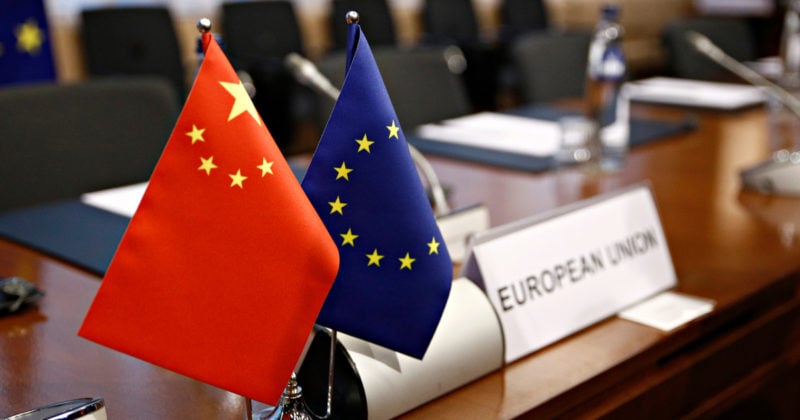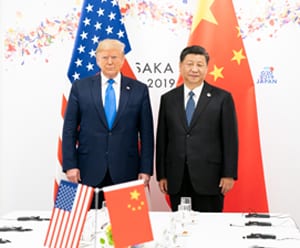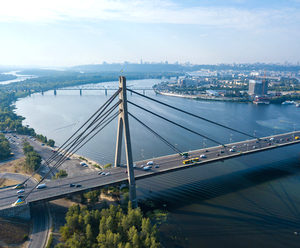
EU-China investment deal: What it means for EU companies in China

When two of the world’s largest traders put pen to paper on a major investment deal, there are potential ramifications for both those regions and the rest of the world.
The Comprehensive Agreement on Investment (CAI) signed in December 2020 between the European Union (EU) and China is a case in point. China is the EU’s second-biggest trading partner behind the United States, while the EU is China’s biggest trading partner.
Over the last 20 years, the bloc has invested more than €140 billion in China, with Germany being the largest investor. Chinese Foreign Direct Investment (FDI) into the EU amounts to almost €120 billion during the same period.
Almost seven years in the making, the CAI aims to give each region’s businesses more predictable, long-term access to the other’s market. The EU is hailing the deal as a landmark arrangement that will also help bind China to ambitious principles on sustainability, transparency and non-discrimination, and prevent backsliding.
Creating new market openings
The new deal aims to commit China to open up key sectors to the EU. Beneficiaries will include European investors in manufacturing, including transport and telecommunications equipment, chemicals, and health equipment. Other investors who stand to gain include those in the services sector, such as finance, private health, construction, and more.

Improved access for EU firms will come via the removal of restrictions in key areas. For example, in financial services, the CAI binds China to remove joint venture requirements and foreign equity caps for banking, trading in securities and insurance, and asset management.
In health services, China will offer new market openings by lifting joint venture requirements for private hospitals in key Chinese cities, including Beijing, Shanghai, and Guangzhou.
China has also agreed to remove bans on foreign investment in markets such as cloud services (subject to a 50 percent equity cap), electric vehicles, and land-based international maritime transport activities, among others.
For China, the deal includes investment possibilities in renewable energies on a reciprocal basis. Simultaneously, the CAI entails provisions supporting the work mobility of managers and specialists from both Chinese and EU companies, without the need for labor market tests or quotas.
As companies in both regions seek to take advantage of these new opportunities, DHL Global Forwarding’s recent signing of a Memorandum of Understanding (MOU) with Ukrainian Railways, and the Center of Transport Service Liski to develop rail connectivity between China and Ukraine is particularly timely.
“Improving accessibility between Asia and Europe enables businesses to effectively tap on the growing trade and investment potential across both regions. This landmark investment deal will deepen access for EU investors into the Chinese market," said Steve Huang, CEO, DHL Global Forwarding Greater China.
“Also, these efforts to enhance rail links between the world's biggest economic blocs will play a crucial role in strengthening economic ties, significantly boosting two-way trade,” he added.
Leveling the playing field
The EU believes that the deal significantly levels the playing field for European businesses and workers active in China, making market access conditions for EU companies more transparent, but independent of China’s internal policies.
For instance, the agreement obliges China to commit to clear rules for the behavior of Chinese state-owned enterprises, along with transparency over subsidies in the services sector.
It also prohibits practices such as forced technology transfers — the practice of making companies hand over proprietary technology, in exchange for access to the Chinese market. In case of a breach of commitments, the EU can resort to a dispute resolution mechanism outlined in the agreement.
In a first for Beijing, China also agrees to be bound by certain provisions on sustainable development such as implementing the Paris Agreement on climate. China has also committed to try and ratify other International Labor Organization (ILO) fundamental conventions, including those on forced labor.
The European Parliament (EP) has yet to approve the agreement, voicing some concerns over its content. These include criticisms that the deal does not go far enough to bind China to international agreements on human rights issues.
EP members (MEPs) have also raised questions about the impact the deal could have on transatlantic relations. The deal was wrapped up just weeks before U.S. President Joe Biden’s inauguration, leading some MEPs to suggest it was pushed through before the new U.S. administration had time to pressurize the EU to tighten the deal’s terms.
Some analysts have even described the long-sought agreement as a strategic victory for China. “The EU’s size as the world’s largest market, and its high level of technological development could [have been] leveraged to obtain more reciprocity with China … at the geopolitical level, the biggest winner is China,” said Dr. Alexander Vuving, a professor at the Asia Pacific Center for Security Studies in Honolulu, Hawaii.
Boosting trade cooperation and predictability
Will the CAI live up to the EU’s claims that it is a landmark deal and geo-economic game changer?
Time will tell, but the agreement certainly has broader implications beyond merely removing barriers to market access in both regions.
Political analyst Andrew Korybko believes the CAI’s reported terms are “a watershed event in Eurasian economic relations” that will allow each party to unleash each other’s potential. “The western and eastern peripheries of the supercontinent will now invest in one another’s economies, on more equal terms that are without historical precedent,” said Korybko.
At the very least, the arrangement offers companies in both regions a valuable degree of cooperation, certainty, and predictability, as markets shift and fragment in the post-pandemic future.
ALSO WORTH READING













 English
English